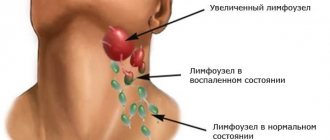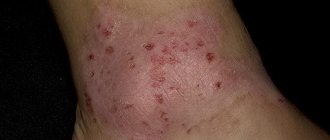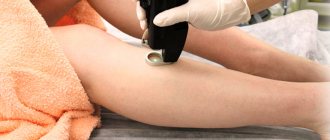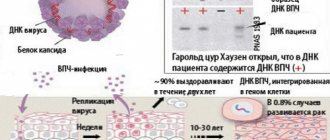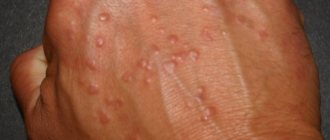Ambrosia is considered one of the most dangerous plants for allergy sufferers. No wonder it is called not only “food of the gods,” but also “dust of the devil.” This weed has about 50 species. Previously, it grew only in North America, but in the 18th century. was introduced into Europe along with infected clover seeds. Due to climate change, the plant quickly spread throughout Europe and also penetrated into Russia. Ragweed allergies are common, and each year the number of people suffering from reactions to the weed increases.
Causes of allergies to ragweed
Ambrosia is a weed whose flowering begins in July and ends in October. It is at this time that the peak of allergic reactions is observed.
This weed is widespread in the United States of America, Europe, Asia, and Russia. There are about fifty species of plants, but in Russia only three are the most common, these are ambrosia pollifolia, holomanteculate and tripartite.
Ambrosia artemisiifolia (polnofolia).
The main causes of an allergic reaction to ragweed are:
- burdened hereditary history;
- an existing allergic disease (asthma, hay fever), causing a cross-reaction;
- regular contact with the plant, for example, living in an area with a high concentration of pollen in the air during the flowering period;
- disturbances in the functioning of the immune system due to ongoing or chronic diseases;
- environmental pollution that has a negative impact on the human body;
Ambrosia trifida (tripartite).
Causes of allergies
This type 1 allergic reaction is directly related to the production of reagin antibodies, representing the class of immunoglobulins E, G4. When the mucous membrane of a person suffering from hay fever comes into contact with ragweed pollen, reagin antibodies are formed. In this situation, they do not protect the body, but, on the contrary, promote the activation of mast cell degranulation. Then, mediators gradually penetrate into the patient’s blood, which cause the signs of this type of allergy. Mediators include leukotrienes, serotonin, as well as histamine and prostaglandins.
The most important role in the development of all these mediators goes to histamine, since it is he who makes capillaries more permeable, helps to increase secretion of the mucous membranes of the respiratory tract, and dilates blood vessels. Histamine lowers blood pressure and increases heart rate. An allergy to ragweed begins approximately 15-20 minutes after contact with this allergen.
Any allergic reaction is associated with the state of a person’s immunity. Therefore, the strength with which it will manifest itself completely depends on the state of the patient’s body. The most important risk factors that negatively affect the immune system include a lack of vitamins and microelements, poor diet, chronic fatigue, and constant stress. All this has a negative impact on the exacerbation of seasonal illness.
Ragweed allergens
Ragweed pollen contains 12 potential allergens with varying molecular weights. Below we will consider which proteins are the most dangerous and most often cause allergic symptoms in children and adults.
Amb a 1 and Amb a 2 are major allergens belonging to the pectate lyase family. More than 90% of patients are sensitive to these antigens, which have the highest allergenic activity.
Amb a 3 is a highly basic protein of the plastocyanin family. Classified as a minor allergen. It has a singly connected ion-binding surface, which is involved in the electron transport chain in plants. Amb a 3 has a molecular weight of approximately 11 kDa. The frequency of sensitization ranges from 30 to 50%.
Amb a 4 belongs to the family of defensin-like proteins with a molecular weight of about 30 kDa. Increased sensitivity to this antigen is 20-39%.
Amb a 5 is an antigen with a molecular weight of 5 kDa. Sensitization to it occurs in 10% of reactions.
Amb a 6 is a nonspecific lipid transfer protein with a molecular weight of 10 kDa. Sensitization is about 21%.
Amb a 7 is another minor allergen belonging to the plastocyanin family. The molecular weight is 12 kDa. Allergic reactions to it occur in 15-20% of cases.
Amb a 8 belongs to the profilin family with a molecular weight of approximately 14 kDa. The frequency of sensitization to the allergen is about 26%.
Amb a 9 and Amb a 10 belong to the polkalcins, a family of calcium-binding proteins that play an important role in binding calcium during ragweed growth. They have a molecular weight of 9 kDa and 18 kDa, respectively. Allergic reactions to these antigens account for about 10-15%.
Amb a 11 is a cysteine protease, molecular weight 37 kDa. It is a highly allergenic protein. The frequency of sensitization is 50-66%.
The recently identified allergen Amb a 12 is an enolase with a molecular mass of approximately 48 kDa. It has a significant prevalence of IgE reactivity, ranging from 41 to 68%.
Atypical manifestations
Atypical manifestations of allergic symptoms include the clinical picture in children. All of the above symptoms persist, but the characteristic signs of a cold are added, which significantly complicates diagnosis and does not allow the correct treatment to be prescribed. This fact is especially dangerous when parents try to start therapy on their own without consulting a doctor.
Characteristic signs of a cold with this pathology include:
- fever;
- sore throat, redness, pain when swallowing;
- runny nose with copious discharge from the nasal cavity;
- cough.
Attention! Seeing a doctor is necessary to prevent the main complication of an allergic reaction - Quincke's edema and suffocation due to swelling of the larynx.
Cross allergy to ragweed
The ragweed allergen, due to its similar structure, can be cross-reactive, that is, it can give cross-allergic reactions with other plants, fruits, vegetables, nuts and other foods.
The phenomenon can intensify during the flowering period of ragweed, that is, from July to October, so you should use these products with caution and minimize contact with cross plants.
Amb a 1 shares the highest cross-reactivity of 68% with sunflower. Also shows a reaction with wormwood allergens (Art v 6) and the Cupressaceae family, such as Japanese cedar (Cry j 1), juniper (Jun v 1), Arizona cypress (Cup a 1), which is about 45%.
In allergic patients, profilins (Amb a) may be responsible for cross-reactivity with other food and pollen allergens such as hazelnut (Cor a 2), apple (Mal d 4), carrot (Dau c 4), banana (Mus a 1), peach (Pru p 4), sunflower (Hel a 2), timothy (Phl p 12), birch (Bet v 2), olive (Ole e 2), hogweed (Cyn d 12) and many other allergens. All these reactive allergens have a structural identity of more than 65%.
may be responsible for cross-reactivity with other food and pollen allergens such as hazelnut (Cor a 2), apple (Mal d 4), carrot (Dau c 4), banana (Mus a 1), peach (Pru p 4), sunflower (Hel a 2), timothy (Phl p 12), birch (Bet v 2), olive (Ole e 2), hogweed (Cyn d 12) and many other allergens. All these reactive allergens have a structural identity of more than 65%.
Polcalcines (Amb a 9 and Amb a 10) cross-react to the antigens of wormwood (Art v 5), birch (Bet v 4), olive (Ole e 3) and (Ole e 8), pigweed (Cyn d 7), timothy ( Phl p 7). Moreover, the symptoms worsen during periods of drought and increased concentrations of carbon dioxide in the air.
Ambrosia defensin-like proteins (Amb a 4) are similar to antigens of wormwood (Art v 1) and sunflower.
Enolase (Amb a 12) reacts similarly to the homologous latex antigen structure (Hev b 9).
Water therapy
During the flowering period of ragweed, adults and children who are prone to hay fever should drink more water daily. The liquid reduces the risk of exacerbation of allergies and eliminates symptoms. For greater effectiveness of therapy, different types of water are used:
- Melted – eliminates irritation and itching on the skin, improves immunity. You can buy it at the store or prepare it yourself. A plastic bottle is filled with clean water and placed in the freezer. The first crusts of ice are thrown away, the remaining liquid is frozen completely. Ice is defrosted at room temperature.
- Silicon – neutralizes most toxins, improves the body’s protective functions, and soothes irritated skin.
- Plain water stimulates the urinary system and sweat glands, which promotes the rapid elimination of harmful organisms.
The amount of fluid consumed per day in liters is calculated using the formula:
- children and women = body weight (kg) x 0.03 + 1;
- men = weight (kg) x 0.04 + 1.2.
Not only do they drink water, they wash the nasal and oral cavities with it. During seasonal fever, it is recommended to take a shower twice a day.
Diet for allergies to ragweed
Hypoallergenic nutrition for ragweed allergies involves temporarily excluding all cross-products listed above from your usual diet.
Most antigens are destroyed during heat treatment, so it is possible to use them in the menu, but in moderation and based on the body’s reaction to them.
It is also prohibited to consume alcohol, fatty and fried foods, processed foods, canned food, and herbal teas.
You can eat: dairy and fermented milk products, cereals, lean meats, potatoes, cabbage.
Ragweed allergy - symptoms and signs
An allergy to ragweed is characterized by symptoms similar to those that appear with hay fever:
- watery runny nose (allergic rhinitis);
- obstruction of the nasal passage;
- prolonged dry cough, chest pain;
- shortness of breath, suffocation;
- redness of the eyes, itching of the eyelids, lacrimation, purulent discharge;
- repeated sneezing;
- Quincke's edema;
- skin rashes: urticaria, dermatitis, etc.
Photo: allergy to ragweed in the form of rhinoconjunctivitis.
Cross food allergies may cause nausea, vomiting, stomach pain, itching in the mouth, swelling of the pharynx, various rashes, etc.
Photo: skin rash from ragweed
Allergy to ragweed in children and pregnant women
In women, during the period of bearing a child, immunity may be weakened, and in children of preschool age, it is not yet fully formed. Therefore, in summer and autumn, an allergy to weeds is possible. Symptoms, however, are more severe, and treatment can be difficult due to the limited list of drugs.
If you suspect an allergy due to ragweed pollen, you must adhere to measures to protect the mucous membranes, and also spend less time outdoors.
Treatment with traditional medicine
Herbal medicines in the treatment of developing allergies to pollen and other microparticles of ragweed must be used independently with extreme caution. When using medicinal plants, allergies may increase, and this must be taken into account when choosing folk recipes.
The use of herbal remedies cannot fully replace traditional drug therapy. Therefore, they are used either in conjunction with medications prescribed by a doctor, or after finishing taking them.
Infusions and decoctions, mumiyos, single-component and multi-component mixtures help in the treatment of allergies.
Celery infusion
Components:
- Celery roots – 10 grams;
- Hot water - one and a half liters.
The roots are washed, crushed and steamed with boiling water. Leave them in a closed container for 4-5 hours. Then the infusion is filtered, take it 3-4 times a day 30 minutes before main meals, 1-2 spoons.
Infusion of mumiyo
Mountain resin improves the functioning of the immune system, reduces susceptibility to allergies, and normalizes metabolic reactions. To prepare the infusion, you need to pour a gram of mumiyo with a liter of warm water and wait until it is completely dissolved.
Take the infusion ½ glass twice a day, for children a single dosage is 30-50 ml. The course of therapy is from 10 to 30 days.
Tea from a series
The series contains natural antihistamine components; in addition, the plant is endowed with an anti-inflammatory effect and can improve the restoration of the skin.
Tea from the series should completely replace regular tea for the period of treatment. The drink is prepared fresh each time from a teaspoon of herbs and a glass of boiling water. After steeping for 20 minutes, you should get light golden tea, which should be strained and drunk in one go. It is recommended to consume 3-4 cups of this infusion per day, and treatment should continue for at least 6 months.
For skin rashes and dermatitis, you can take baths with a decoction of the string. It is prepared from 3-4 spoons of the plant, pour them with a liter of water, leave for an hour, filter and pour into the bath. Procedures should be carried out 3-4 times a week.
Nettle infusion
Components:
- Dry nettle leaves - 4 tbsp. spoons;
- A liter of cold water.
The crushed nettle phytoraw material is poured with water and boiled over low heat for 15 minutes. After cooling, the drink is filtered; you need to drink it in equal portions per day.
Nettle decoction cleanses the blood of toxins and helps normalize the immune system. You can take the drink for 2-3 weeks.
Decoction of pine needles and rose hips
Components:
- Dried rose hips;
- Pine needles.
Plant components are needed in the same quantity - 2 tablespoons. Before preparing the decoction, dry rosehip should be crushed with a rolling pin and the pine needles should be chopped.
The prepared components are poured with a liter of water and simmered over low heat for 15 minutes. The cooled drink is filtered and should be drunk throughout the day. Duration of therapy is 10-14 days.
Diagnosis of allergy to ragweed grass
In order to determine whether ragweed actually causes an allergy, you need to consult an allergist. First, the doctor will examine the patient and collect the information necessary for a complete picture of the clinical picture of the disease. Based on these data, studies will be prescribed and further treatment will be determined.
Diagnosis of the disease is carried out in two ways: skin tests and laboratory blood tests.
Ragweed allergen detection by skin testing.
Skin tests are carried out by injecting small drops of an allergen under the patient's skin, after which the body's reaction is assessed. An itchy blister at the puncture site indicates a positive test result. The technique is available only during remission, for children over five years of age and elderly people up to 60 years of age.
Laboratory diagnosis is carried out using a blood test for specific Immunoglobulin to ragweed pollen. Analyzes are carried out at any time of the year and are highly accurate.
Allergy to ragweed - treatment
Many people who are faced with the disease do not know how to get rid of an allergy to ragweed. Today, there are two approaches to treatment: elimination of already manifested signs, as well as almost complete elimination of symptoms for a long time, that is, desensitization of the body. Let's look at these treatments below.
Medicines for ragweed allergies should be selected by a doctor, since illiterate therapy can cause significant harm to health, including the development of bronchial asthma.
Symptomatic treatment of ragweed allergy is widely used to combat respiratory symptoms and skin rashes caused by pollen. These are mainly oral non-sedating H1-antihistamines and intranasal glucocorticoids. In addition, mast cell stabilizers, leukotriene antagonists, and anti-inflammatory eye drops may be used. Often, combined treatment approaches are used with the simultaneous use of several groups of drugs.
Ragweed allergy tablets: Zodak, Erius, Loratadine, Cetrin, etc. For infants and small children, drops of drugs are used: Fenistil, approved for use from 1 month and Zyrtec - from 6 months.
To get rid of allergic rhinitis caused by ragweed, nasal drops containing vasoconstrictor and antihistamine active substances are used. As a rule, Vibrocil, Tizin Allergy, Avamis, Allergodil, etc. are prescribed. For infants and young children, it is recommended to rinse the nasal turbinates with sea water: Aqualor Baby, Dolphin, Aquamaris.
Medicines containing cromoglycic acid will help eliminate the manifestations of allergic conjunctivitis. For example, Cromohexal, Intal, Lecroin. These drugs, in moderate quantities, are approved for use during pregnancy in the 2nd and 3rd trimester, as well as for children over 2 years of age.
Also, medicine for ragweed allergies is widely used in the form of eye drops with an antihistamine component. For example, Opatanol, Azelastine, Visin Allergy.
Various skin rashes and itching of various origins, with moderate manifestations, are relieved with the help of non-hormonal creams and ointments, for example, Fenistil gel.
Severe skin manifestations are eliminated with hormonal drugs: Hydrocortisone, Advantan, Prednisone, etc. However, these drugs should not be used independently, as they have a wide range of contraindications and side effects. In this case, it is necessary to consult your attending physician, an allergist or dermatologist.
For food reactions, it is recommended to use sorbents that accelerate the removal of antigens from the gastrointestinal tract: Polysorb, Lactofiltrum, activated carbon, etc.
For allergic asthma caused by ragweed allergy, the main therapeutic drugs are inhaled corticosteroids and beta 2 agonists. Read more about them here.
ASIT therapy
Although the effectiveness of symptomatic treatment is supported by clinical trials, pharmacotherapy often fails to adequately control symptoms and may cause side effects.
Moreover, symptomatic treatment cannot influence the underlying immune mechanisms of allergy and, therefore, cannot change the course of the disease.
The only treatment for ragweed allergy is allergen-specific immunotherapy (ASIT), which is used to treat moderate to severe intermittent or persistent symptoms of allergic rhinoconjunctivitis, especially in patients with a negative response to medications.
Therapy consists of many years of gradual introduction of low doses of the allergen into the human body, thereby developing tolerance to it. There are two methods of treatment: subcutaneous injections of the allergen (classic option) and sublingual preparations (sublingual method). More information about ASIT is described in this article.
The convenience of the sublingual method is that you can use the drug at home.
Ambrosia: allergies
Ragweed is a widespread weed that easily grows to significant sizes in a variety of conditions, including less than favorable ones. It is very difficult to eradicate such a plant, since even when it is cut, part of the root system remains in the soil, from which a new stem grows quite quickly.
Ambrosia is considered one of the strongest allergens of our time, and is also notorious for its ability to provoke bronchial asthma. During flowering, such a weed releases into the environment a huge amount of tiny particles of pollen, which are easily transported by the wind over considerable distances. Therefore, people who are unlucky enough to be allergic to such a plant cannot feel safe almost anywhere, with the exception of those areas where ragweed does not grow in principle.
Doctors claim that ragweed pollen can cause symptoms of individual intolerance even in people who have never been prone to such hypersensitivity in their lives. Just a couple of weeks of continuously breathing air containing particularly high levels of allergens, and the likelihood of allergies will increase to critical levels.
Traditional treatment for ragweed allergies
Many people mistakenly believe that a folk remedy for ragweed allergies can help them better than a medical drug. However, this is not true, because it is quite simple to start the disease and much more difficult to cure it.
This insidious disease will easily begin to progress and, as a result, due to untimely treatment, a person may show signs of bronchial asthma.
In addition, all homemade infusions and decoctions can cause a cross allergic reaction. Therefore, using traditional medicine in the treatment of allergies is not recommended; it is better to consult a doctor.
Diagnostics
The protein responsible for the allergic reaction can be determined using the results of analyzes using the ImmunoCap method, where the major and minor proteins of ragweed must be indicated.
In the case when an allergy sufferer suffers from polyvalent (multiple) allergies, it is better to undergo a complete AllergoChip test, which examines 112 allergenic components and 51 proteins of common allergens, or Alex, which examines 300 proteins.
The results of these tests will help identify the proteins that are responsible for the allergic reaction (triggers), from which ASIT immunotherapy will be carried out.
Prevention: how to relieve allergies
In order to survive the flowering of weeds in more comfortable conditions, you must adhere to the following rules:
- protect mucous membranes from pollen settling, that is, wear a mask and glasses, use nasal filters;
- upon returning from the street, take a shower, wash your hair, rinse your nose;
- do not change clothes in the bedroom;
- ventilate the room only on days with high humidity;
- use an air purifier, air conditioner;
- if this is possible, then you should be on the street less often and not travel out of town;
Now you know how to get rid of an allergy to ragweed. We wish you good health!
Prevention
Measures to help protect yourself if you are allergic to ragweed:
- During the flowering period, if possible, move to an area with low pollen concentrations. When living in a private house, make sure that there are no plants nearby.
- Close windows and vents so that less pollen gets inside, install protective nets. It is advisable to purchase an air purification product.
- Daily wet cleaning is required.
- It is better to go for a walk early in the morning and evening, as the pollen concentration will be lower. It is recommended to use a special mask. Upon return, rinse your nose and throat and take a shower.
- Pets that go outside for walks can carry pollen on their fur. It is advisable to wash them after each walk.
- Proper skin care is important. It is necessary to wear only comfortable clothes and use cosmetics and chemicals less often. It is advisable to cut your nails short. Do not use a washcloth or rub the skin. The shower should be at a comfortable temperature.
The main thing is to comply with all the requirements of specialists. Then the signs of the disease will be much less pronounced, and the patient will not experience constant discomfort.


